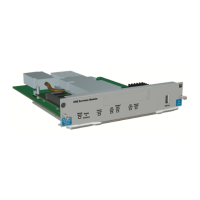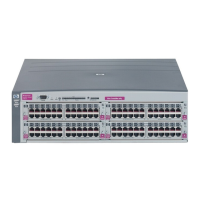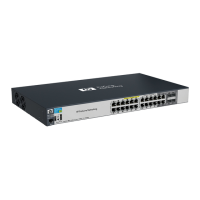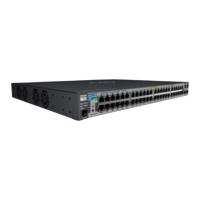■ provider-network -- Configure qinq port-type as provider-network (p. 267)
■ qos -- Set port-based priority (p. 268)
■ dscp -- Specify DSCP policy to use. (p. 231)
■ binary-range < 0 to 63 > -- Specify the DSCP code-point in binary. (BINARY) (p. 227)
■ integer-range < 0 to 63 > -- Specify the DSCP code-point in decimal. (p. 239)
■ well-defined < af11 | af12 | af13 | ... > -- Define mapping between a DSCP
(Differentiated-Services Codepoint) value and an 802 (p. 285)
■ priority < 0 | 1 | 2 | ... > -- Specify priority to use. (p. 265)
■ rate-limit -- Enable/disable and configure rate-limiting for all traffic (or for incoming ICMP
traffic) on the port(s) (p. 271)
■ all -- Set limits for all traffic. (p. 219)
■ in -- Set limits for all inbound traffic. (p. 238)
■ kbps < 0 to 10000000 > -- Specify limit of allowed inbound or outbound traffic in
kilobits-per-second on the specified port(s). Actual limits are in steps of 100Kbps to
100Mbps (granularity is 1% of the lowest related media speed). (p. 246)
■ percent < 0 to 100 > -- Specify limit as percent of inbound or outbound traffic. (p.
258)
■ out -- Set limits for all outbound traffic. (p. 257)
■ kbps < 0 to 10000000 > -- Specify limit of allowed inbound or outbound traffic in
kilobits-per-second on the specified port(s). Actual limits are in steps of 100Kbps to
100Mbps (granularity is 1% of the lowest related media speed). (p. 246)
■ percent < 0 to 100 > -- Specify limit as percent of inbound or outbound traffic. (p.
258)
■ bcast -- Set limits for broadcast traffic. (p. 227)
■ in -- Set limits for inbound broadcast trafic. (p. 238)
■ percent < 0 to 100 > -- (p. 258)
■ icmp -- Set limits for ICMP traffic only. (p. 237)
■ kbps < 0 to 10000000 > -- Specify kilobits-per-second limit of allowed ICMP traffic (values
should be at least 13Kbps, or max-length ICMP packets will fail.) (p. 246)
■ percent < 0 to 100 > -- Specify limit as percent of inbound or outbound traffic. (p. 258)
■ mcast -- Set limits for multicast traffic. (p. 249)
■ in -- Set limits for inbound multicast trafic (p. 238)
■ percent < 0 to 100 > -- (p. 258)
■ service-policy -- Apply the QoS/Mirror policy on the interface (ASCII-STR) (p. 275)
■ in -- Apply policy on inbound packets. (p. 238)
■ speed-duplex < 10-half | 100-half | 10-full | ... > -- Define mode of operation for the port(s) (p.
276)
■ type < Trunk | | | ... > -- (p. 280)
■ unknown-vlans < Learn | Block | Disable > -- Configure GVRP on the port(s) (p. 281)
■ [no] interface svlan -- Add, delete, edit SVLAN configuration or enter a SVLAN context (VLAN-ID)
(p. 277)
■ auto -- Cause each port identified in the port list to learn its VLAN membership using the GARP
VLAN Registration Protocol (GVRP) ([ethernet] PORT-LIST) (p. 225)
■ connection-rate-filter -- Re-enables access to a host or set of hosts that has been previously
blocked by the connection rate filter (p. 228)
■ unblock -- Resets a host previously blocked by the connection rate filter (p. 281)
■ all -- Resets all previously blocked by the connection rate filter (p. 219)
■ host -- Match packets from the specified IP address. (IP-ADDR) (p. 237)
■ src-ip -- Match packets from the specified subnet. (IP-ADDR/mask-LENGTH) (p. 277)
■ dhcp-snooping -- (p. 230)
■ forbid -- Prevent ports from becoming a member of the current VLAN ([ethernet] PORT-LIST)
(p. 234)
■ ip -- Configure various IP parameters for the VLAN (p. 240)
206© 2009 Hewlett-Packard Development Company, L.P.
interfaceCommand Line Interface Reference Guide
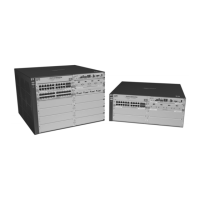
